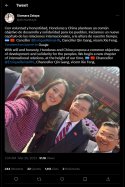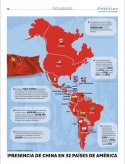“While the U.S. has many vital national interests,” Florida Governor Ron DeSantis wrote recently, “becoming further entangled in a territorial dispute between Ukraine and Russia is not one of them.”
How Ukraine Became Independent
The hard truth is this: Ukraine’s 1991 borders were partly a subterfuge of Soviet propaganda and did not fully make sense for an independent country alongside Russia. Containing large swaths of historical Russia, millions of ethnic Russians, and a crucial Russian naval base at Sevastopol on the Crimean Peninsula (which was transferred to Ukraine only in 1954 and is home to few ethnic Ukrainians even now), those borders actually guaranteed Russian hegemony in the short term. They’re why pro-Russia presidential candidates won almost every election in Ukraine from 1991 until the “Euromaidan” revolution of 2014. Indeed, Ukrainian-nationalist parties have ruled for the past decade partly because the electorate no longer includes residents of the Donbas or Crimea, the heavily Russian areas that either broke away or were seized by Russia after the pro-Russian government was deposed in 2014.
Hence, from Russia’s point of view, the commitments of 1991 and 1994 were mostly a formality, because Moscow expected Ukraine to remain firmly in its orbit. But those guarantees only kicked an explosive can down the road, because if a strong Ukrainian-nationalist movement should ever arise, as it has now, oriented toward Europe and bent on independence from Russia, the 1991 borders would create a fatal conflict between Ukraine’s nationhood and that of the Russians, many of whom view Ukraine—especially east of the Dnipro River—as an inseparable part of Russia.
Russia may be waging a war of aggression as a matter of law, but as a matter of history and strategy it is moving to forestall a grave deterioration in its strategic position, with stakes that are almost as existential for it as they are for Ukraine. And as former Russian President Dmitry Medvedev said recently, “Nuclear powers have never lost major conflicts on which their fate depends.”
When the U.S. agreed to recognize Ukraine in 1991, it should have realized that Ukraine’s borders could prove enormously destabilizing, like the nuclear forces and Black Sea fleet that Ukraine had also accidentally inherited and which the U.S. wisely insisted be transferred to Russia in 1993–94.
The U.S. should have treated the 1991 borders as provisional and encouraged Russia and Ukraine to agree on a peaceful adjustment. As Ukrainian nationalism gathered strength, Russia could perhaps have been persuaded to agree to a territorial adjustment.
Governor DeSantis was right on another score: The proximate cause of the war was definitely a territorial dispute, but of a very special kind. After the Euromaidan revolution, Russia felt it had no choice but to annex Crimea, because it couldn’t risk losing Sevastopol. But it still did not annex the eastern Donbas, which it was also occupying, insisting instead on its reintegration into Ukraine under the terms of the Minsk Agreements of 2014 and 2015, which it saw as vitally necessary to restoring its control over the whole of Ukraine. For the same reason, Ukraine’s nationalists soured on the Minsk Agreements: With those territories in limbo, the nationalists had been able to achieve a degree of independence that would have been impossible otherwise.
America’s Blank Check
As tensions mounted in 2020 and 2021, Germany and France grew anxious to persuade Ukraine to implement the Minsk Agreements, in which all the major issues were territorial. But, with their customary professions of high moral and legal principle, the Americans undercut those diplomatic efforts, encouraging the Ukrainians to dig in their heels and dare Russia to do something about it. It was an implicit blank check and had the same effect as when the kaiser wrote one a century ago, namely to entice the recipient to risk a catastrophic war with Russia.
It is crucial to understand the dangerous role that America is playing. The sheer scale of U.S. aid to Ukraine has become a decisive factor in the course of the war. Don’t be deceived by President Joe Biden’s claims that we are helping Ukraine without getting involved in the conflict ourselves. Even according to the Defense Department’s own Law of War Manual, the U.S. is already a de facto belligerent in the Ukraine war.
The lack of strategy behind the deluge of American missiles and tanks flowing into Ukraine is frightening. The U.S. is giving Ukraine enough aid to prevent a Russian victory, but the stated aim of liberating all of Ukraine’s territory, “as long as it takes,” isn’t remotely plausible and is contradicted by other aspects of U.S. policy. This is not the Soviet invasion of Afghanistan, where the Soviets could afford to cut their losses. Even a return to the status quo ante of January 2022 would likely be unacceptable to the Russians. The Russians are almost certainly prepared to lose—and kill—millions of people before giving up the territory they have now. And because the U.S. has thus far insisted that the weapons donated to Ukraine not be used inside Russia, U.S. strategy is currently optimized for making the war last as long as possible without a decisive result.
What’s more, even if Ukraine’s war aims could be achieved, what would Ukraine do then? It could either reintegrate the Russian populations and risk once again becoming a Russian puppet, or disenfranchise them through repression or wholesale expulsion, which, besides violating international humanitarian law, would likely trigger another war. Hence, Ukraine’s stated war aim—the complete liberation of its 1991 territory—might not even be desirable from Ukraine’s point of view.
America’s Vital Interests
The overriding priority of U.S. foreign policy in the century ahead will be to tame the rising power of China. DeSantis’s observation that “the Biden administration’s policies have driven Russia into a de facto alliance with China” is a crucial one. One might add that U.S. policy is accomplishing that quite against Moscow’s will, because a brief glance at the map suffices to see that China’s increasing control over its “near abroad” puts it on a collision course with Russia along a roughly 6,000-mile front, if you include buffer states. In the century ahead, Russia’s only alternative to domination by China is very likely an alliance with the United States, and that is an alliance the U.S. cannot afford to forfeit. Allowing Russia to slip into China’s orbit would bring Chinese power into the very heart of Europe.
Ending the War
Before Woodrow Wilson left his dubious stamp on international relations, wars typically ended in peace treaties. Many of those treaties involved territorial settlements, reparations, and other inducements to stop fighting.
The most important part of DeSantis’s comments signaled a similar approach: “Without question, peace should be the objective.”
Peace should be the overriding objective now, but it will require a willingness to compromise. As the great Cold War game theorist Thomas Schelling observed, parties to a conflict are always negotiating, even if tacitly. If we get beyond their maximalist positions to what each side really needs, a compromise may be possible.
The 1991 borders created a painful dilemma for Ukrainian nationalists. They could have political independence or they could have full territorial integrity, but not, in the real world, both. In the years since the rupture of 2014, Kyiv has tacitly chosen political independence over territory. Russia is facing the mirror image of that dilemma. Putin wants Ukraine to cede the territory Russia now occupies, and to pledge that it will stay out of NATO. Russia must know that it can’t have both of those things while NATO is backing Ukraine. By “annexing” Crimea and now Donbas, it has tacitly chosen territory over political control.
That should help us see the outlines of a durable peace through the fog and din of war. The U.S. should encourage Ukraine to sell the Russians the territory they now occupy in exchange for a large sum that includes reparations. Many wars have been honorably settled that way. A more homogeneously Ukrainian state would be more politically stable and could join the European Union and perhaps even NATO one day.
If Russia declares a cease-fire, the Biden administration will face the decision toward which its policy has been driving it all along: whether to break its promises to Ukraine or dramatically escalate U.S. involvement. The first would gravely damage American prestige and embolden China, while the second would almost certainly lead to a nuclear showdown. Both horns of that dilemma carry totally unacceptable risks, which is why the United States should never have gotten involved in this war to begin with.
A little realism can make idealism go a long way.






